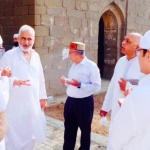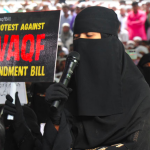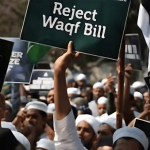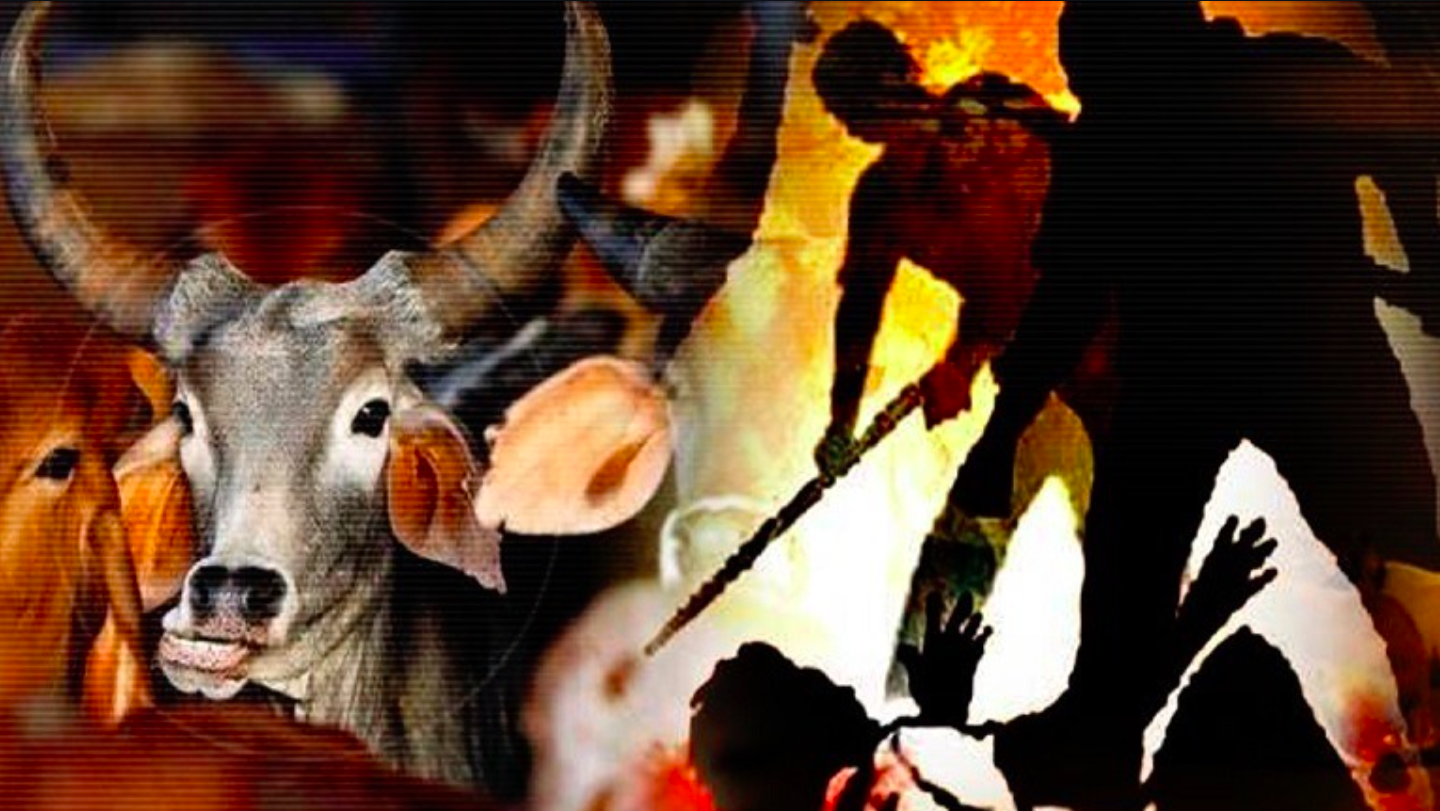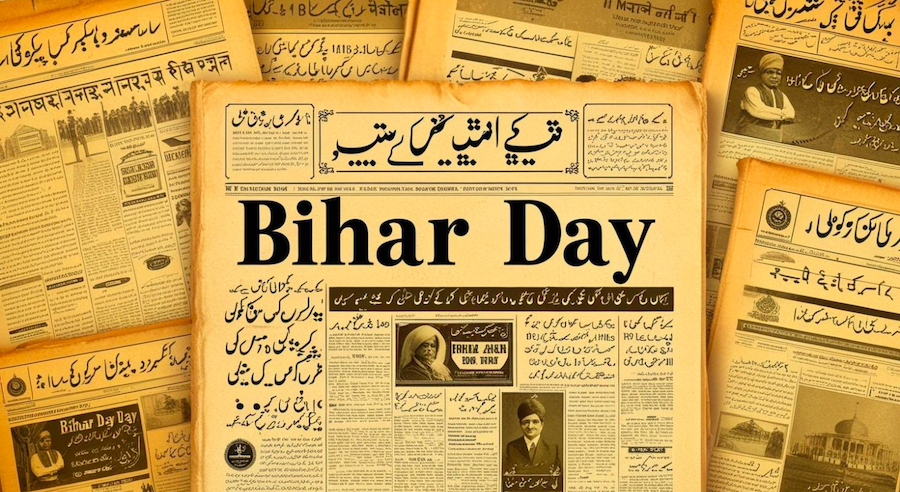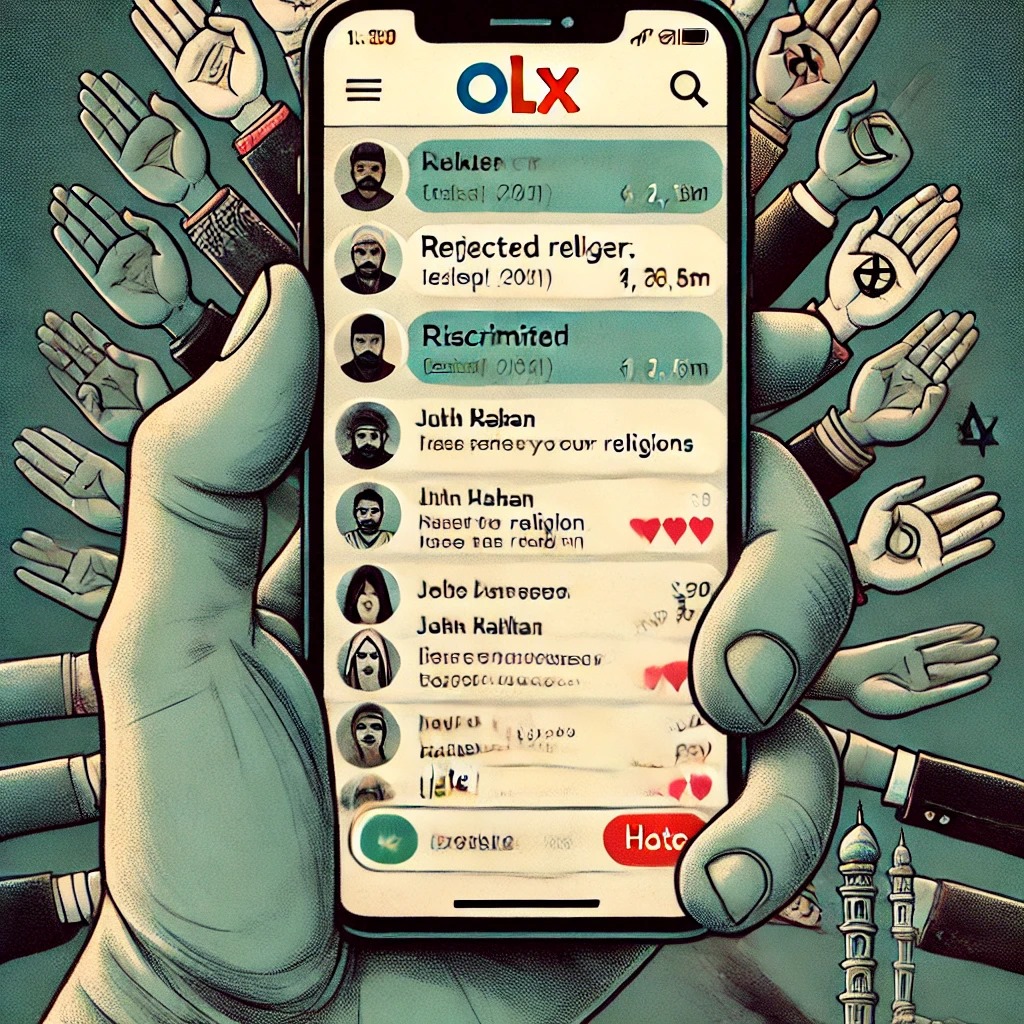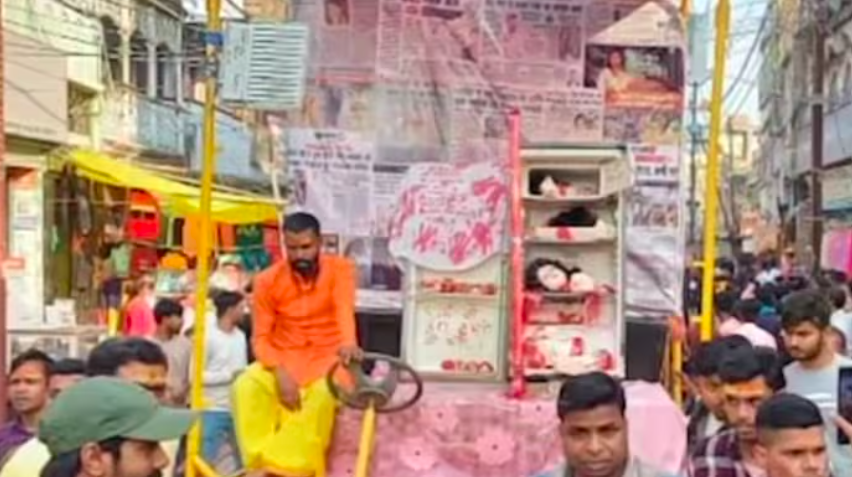Sara Hasan for BeyondHeadlines
Ramayana- the story of Rama, has been written many times, in several languages, over a span of thousands of years located in different social contexts. It has been written in Assamese, Balinese, Bengali, Cambodian, Chinese, Gujarati, Javanese, Kannada, Kashmiri, Khotanese, Laotian, Malaysian, Marathi, Oriya, Prakrit, Sanskrit, Santhali, Sinhalese, Tamil, Telugu, Thai, Tibetan etc. It has also been written in western languages. The many versions of this epic tale are diverse in nature, different events of the story are appropriated with unique understandings in each of the variants. When oral tradition had precedence over the written, the folklorists used to recite the Rama Story or Rama Katha adding their own inferences of events, based on their level of understanding and point of view. The great diversity in understanding led to creation of multiple versions. As Romila Thapar said in one of her writings, that the story in these versions included significant variations which altered the very basic concepts of character, event and meaning in the story.[1]
 The Ramayana written by Valmiki has long been considered one of the first most extensive narrations of Rama’s story. It is believed that Sita, after being banished by Rama, narrated the whole story to Valmiki, a low- caste sage. Valmiki’s Ramayana was later rewritten by a group of Brahmans, who transformed the lead character of Rama into an avatar of Lord Vishnu thereby making an epic tale into sacred work. There is also a legend that says Hanumana wrote Ramayana and Valmiki could only contain fragments of it in his work. Therefore the actual origin of the story, in its entirety is debatable and it can’t be ascertained which work is original. Even Valmiki’s extensive version may have missed upon significant portions of the tale. So what we know is only a part of the story. A.K Ramanujan argues that- “In this sense, no text is original, yet no telling is mere retelling- and the story has no closure, although it may be enclosed in a text.”[2]
The Ramayana written by Valmiki has long been considered one of the first most extensive narrations of Rama’s story. It is believed that Sita, after being banished by Rama, narrated the whole story to Valmiki, a low- caste sage. Valmiki’s Ramayana was later rewritten by a group of Brahmans, who transformed the lead character of Rama into an avatar of Lord Vishnu thereby making an epic tale into sacred work. There is also a legend that says Hanumana wrote Ramayana and Valmiki could only contain fragments of it in his work. Therefore the actual origin of the story, in its entirety is debatable and it can’t be ascertained which work is original. Even Valmiki’s extensive version may have missed upon significant portions of the tale. So what we know is only a part of the story. A.K Ramanujan argues that- “In this sense, no text is original, yet no telling is mere retelling- and the story has no closure, although it may be enclosed in a text.”[2]
The Ramayana and ‘Other Ramayanas’
The more dominant versions, Valmiki’s Ramayana and Tulsidas’s Ramcharitmanas have long stood as standard texts, these have been the basis for other versions, which have both drawn from and rebutted these. There is a clear divide between the North and South Indian tellings of the story. However, even in south there are many versions. The story of Ramayana has traveled from the Indian subcontinent to other parts of Asia. Santosh Desai said- “By land the northern route took the story from the Punjab and Kashmir into China, Tibet and East Turkistan; by sea, the southern route carried the story from Gujarat and South India into Java, Sumatara and Malaya; and again by land, the eastern route delivered the story from Bengal into Burma, Thailand, Laos. Vietnam and Cambodia obtained their stories partly from Java and partly from India via the eastern route.”[3]
Ramayana has been written in different styles of writing- speech, poem, legend etc. Different styles have their own tone and tinge which makes every work unique. Change in expression changes the intensity of a message. A very crucial event in one version may be rendered as insignificant in another because of difference in expression.
Let us look at a few versions that have been considered as digression by the adherents of Sanskrit Ramayanas. In the Tamil version, Iramavatram by Kampan written in the twelfth century Rama is only a Tamil hero whereas Ravana is a God. Kampan’s version may have many similarities with Valmiki’s but the very basis of ‘the righteous’ differs radically. Kampan’s version is read in Tamil, Telugu and even Malayalam. Thailand’s version, the Ramakien is influenced by the Tamil but according to Santosh Desai Thai version focuses more on the wars probably because Thailand’s early history was full of wars and concern for survival. This is one example of how major differences emerge in retelling a story, changing the very essence of the text.
The Jain versions are not just drastically different but have also thwarted the Hindu values and understanding of the Rama story in Sanskrit Ramayanas. They have especially accused the Brahmans of wrongfully demonizing Ravana, who according to their version is a righteous man. The Jaina version, Paumacariya written by Vimalasuri begins the story not with Rama but Ravana, and praise his moral virtues. It has refuted the Sanskritic Versions as replete with illogical incidents and have attempted to rationalize the events in the Jaina. Buddhist version, Dasarata Jataka, is supposed to have been written by Buddha himself. In this version, Rama and Sita are siblings and yet they marry and rule the kingdom together, much to the dismay and horror of the Hindu versions. However, these sibling marriages are common in early Buddhist literature, symbolizing purity of a dynasty. Santhal tribes of Central India have their own oral traditions for Rama’s story, they see Sita as unfaithful, unlike all other versions where she is seen pious and chaste. The lower castes who felt distanced from Hindu/Sanskrit Ramayanas, created their own versions. Telugu Brahmin Women songs portray Sita in disagreement with Rama and wins over him in the end. Therefore, those who were ‘outcaste’ in the Sanskrit Ramayana traditions, dominated by Hindu Brahmins created their counter versions. Be it the ‘untouchables’ or women, they recreated the story based on the changes they wanted to see in their position of societal hierarchies.
Homogenization wields Hegemony: Doordarshan to Demolition
The ideas of culture, religion and ethnicity have long been used in the organization of people under a uniform idea. To create one- undisputed identity. States have employed various ethical and unethical tactics to keep its people in bounds, as it suits the orientation of the powerful.
The Indian Constitution doesn’t allow propagation of any religion by the State. There has been a policy in effect since independence according to which the State owned media can not broadcast any religious programme. However, this policy of a ‘secular state’ was rendered unessential in 1987 when Information and Broadcasting Ministry decided to televise the Hindu epic Ramayana. Ramanand Sagar’s Ramayana based on the Valmiki version was chosen to be televised on the State owned, and the only Indian TV Channel at that time, Doordarshan. At the time this decision was taken under Rajiv Gandhi’s Congress the BJP’s Ram Janmbhoomi Movement had gain considerable attention. The then VHP leader for the campaign said that the Ramayana serial was crucial in inspiring recruits to the Janmbhoomi Andolan. BJP’s idea of a Hindu Rashtra gained support through the broadcast of Ramayana on TV.
Many people have written on the enormous popularity of Doordarshan’s Ramayana, how people left their essential works to watch the serial, and absenteeism in parliament to unattended crop fields. The Indian television had never seen such popularity of any show. However, we also need to remember that Doordarshan was the only channel at that time. So was there any other option? Though TV arrived much earlier, most households did not possess TV sets until this time. When the serial began, it was seen as dull and extremely slow, gradually it gained importance to the extent that people were stupefied, some people treated the TV set as abode of God and venerated it decorating with flowers.
So why Ramayana? Why not Mahabharata or any other tale broadcasted first? Arvind Rajagopal says that Mahabharat’s story was about a joint family, ethics and morality, it didn’t deal with issues of religiosity or identity unlike the- Ramayana. So why didn’t they broadcast Mahabharat first, argues Arvind, and what would have been the effects if they did. Was the influence of this broadcast so crucial to the Hindutva that had it not been broadcasted the course of politics would have been much different? Lets focus on the events of Ram Janmbhoomi Movement and the broadcast to see if there was an overt connection between the two.
It was argued that since Hindus are the majority the public broadcasting system must meet their preferences. The battle scenes inspired the Hindu militancy and at the same time, the serial began to resonate ideas from the movement. Sagar presented the Ramayana serial as a story of a nation-state harping on the view of Ram Rajya. The serial showed Vedic sacrifices and rituals as scientific research and experiments undertaken for national defence, rishis weapons were nuclear missiles. Many other modern ideas of national security were set in the telling of Ramayana. [4]
When the Shila Yatras began the Kar Sevaks dressed like Ram and Lakshman as shown in the serial. BJP meetings and conferences carried the posters from the serial. The Chariot in the Rath Yatra was similar to the one we saw on DD. The VHP and BJP did not miss any opportunity to thank Ramanand Sagar. The General Secretary of the I & B ministry, Mr. Gill and Ramananda Sagar knew each other from their time in Lahore.
There were some scenes in the serial that neither Valmiki nor Tulsidas mentioned. These were ‘additions’ which, it is hard to believe were apolitical. For example, there is a scene where Ram picks up a lump of soil and bows in front of it; the imagery focuses on Rama’s birthplace, ‘Ram Janmbhoomi’.
Here is an eye witness account of the pre-demolition Ram movement of a journalist, Sanjay Kaw who then worked for ‘The Statesman’, went under cover as a Kar Sevak at the site of Ayodhya before December 6, 1992. Armed with a letter of introduction from a member of the Delhi unit of the BJP, he made his way into the ranks of the Kar Sevaks at Ayodhya. Initially he was put through intense grilling. Several times he had to recite an invented tale of being a Kashmiri Hindu who had abandoned his studies in Kashmir because of militant activity. However, after he was accepted as ‘genuine’, he saw at first hand the face of the religious drama that had remained veiled by political hoopla. He saw hundreds of people assembled near two grave sites. They broke the gravestones with iron rods, large boulders and sharp instruments. It was called ‘Choti Kar Seva’ the grave sites were leveled and water was sprinkled on the ground to make sure that no traces were left. The rubble was lifted and thrown into a nearby pond. Within an hour or so, two makeshift shops were set up at the site to sell tea. All this happened in the presence of an ex-BJP MP. The PAC or Provincial Armed Constabulary’s interaction with the Kar Sevaks was as cordial as that between the BJP and the RSS. He chatted with some Kar Sevaks and spent about four hours chatting with a group of PAC men. “Don’t worry about us, we are solidly behind you,’’ said one policeman. “If we are ordered on December 6 to attack you, we will lay down our arms and join you,’’ reassured another. “We will force the paramilitary forces to surrender,’’ chipped in a third cop. There were many Kar Sevaks who were carrying arms with them. Also, some sadhus were carrying wireless sets with them. One person who was staying with him in the tent told him that all the arrangements had been made by the RSS, from tents to ‘Bhojanalayas’ everything was organized by them. He found out that more than a lakh people had gathered before 6th December. A cook told him that a few more kitchens had been opened and godowns had been packed to meet any eventuality. The person who took him to the bhojanalaya said: “We have even planned the rann neeti (war strategy). The UP police is supporting us and we are even sure of victory.’’ There was organizational machinery managing the needs of tens of thousands of Kar Sevaks: identity cards, meal coupons, tents, lights, feeding arrangements. The machinery wasn’t however, confined to merely boarding and lodging. The tools required for the final demolition were also being put together. Everyone knew that D-Day was nearing. [5]
The above account clearly tells us how pre planned was everything from food to guns. All this was happening with the consent of the State, as it is impossible to believe that a gathering of more than a Lakh people went unnoticed. While the demolition was going on, Doordarshan first went black and then broadcasted earlier footage of Rath Yatra for many hours.
Present generations have seen many Ramayanas now on TV since Doordarshan, after the advent of cable and regional Doordarshan channels people were exposed to various versions and interpretations of the Rama Story. The Babri dispute also reached its ‘safest’ solution. The attempts to use Ramayana as ‘religious’, to promote certain versions and subvert others seethe political mobilizations. One attempt of homogenizing culture in context of the Ramayana tradition is afresh in minds, which came as a shocker, from University of Delhi. Under the pressure from ABVP (Akhil Bhartiya Vidya Parishad) the Academic Council of DU removed one of the most celebrated essays, ‘Three Hundred Ramayanas’ by A.K Ramanujan from the graduation History syllabus because apparently it hurt the sentiments of a religious community. The Academic Council went against the decision of History Department to retain it. History students and teachers across the university and from outside protested against this. It is interesting to learn that most of the people in support of the removal were not even from the field of History.
With the rapid growth in the world of communication, there is little exposure that children get to our age old literary traditions. The children in school today may not even know of Doordarshan’s Ramayana, forget about learning of its influence on masses. But now there is also a real threat to the existence of scholarly research work, when the hooligans of these political parties have the power to vandalize anything and everything that destabilizes their ideas of ‘religion’ and ‘identity’, no matter how vague these are. They may not have ever read even one version of Ramayana but based on hearsay and ideologies of their mother parties, before understanding what they want for themselves, they would first create a sense of the- ‘Other’.
(Author is Programme Coordinator at The Kutumb Foundation and This article was first published in Parallel Post)
[1] See: Romila Thapar, ‘The Ramayana Syndrome’ Seminar, 1989
[2] See: A.K Ramanujan, ‘Three Hundred Ramayanas’, Many Ramayanas, 1994
[3] See: A.K Ramanujan, ‘Three Hundred Ramayanas’, Many Ramayanas, 1994
[4] See: ‘Politics After Television’ by Arvind Rajagopal
[5] See: Outlook, The Secret Witness: Undercover with the kar sevaks in Ayodhya, winter 1992



